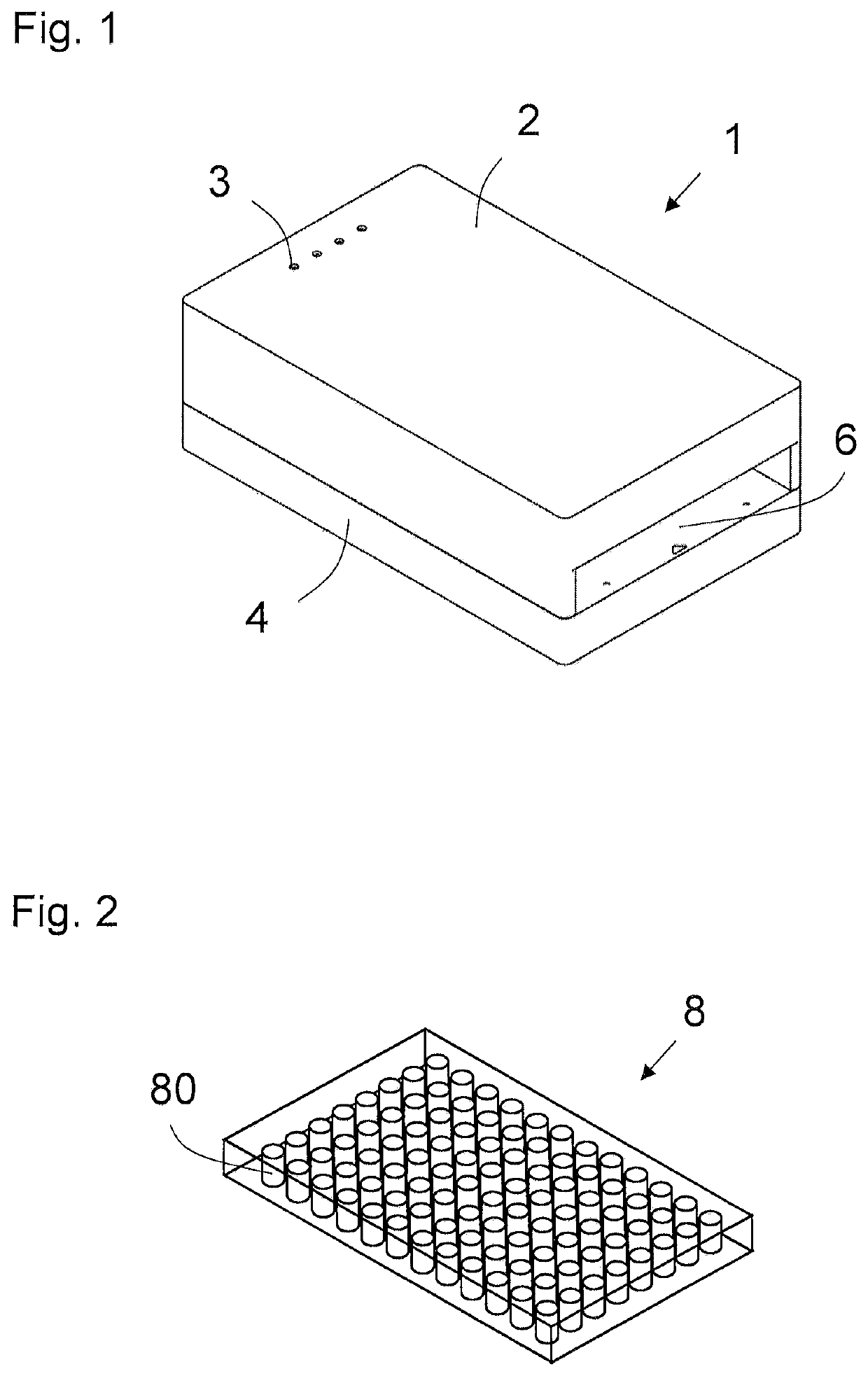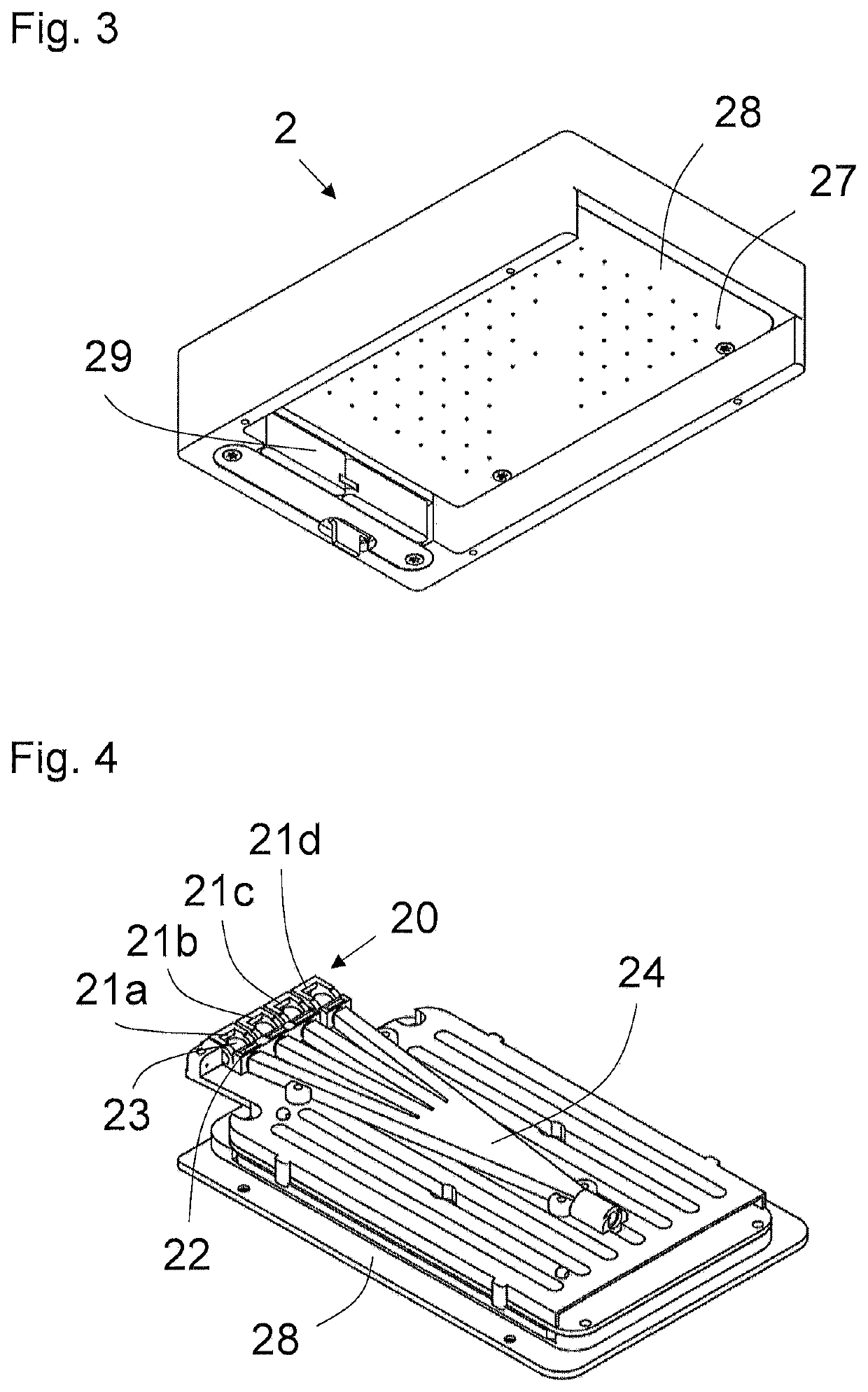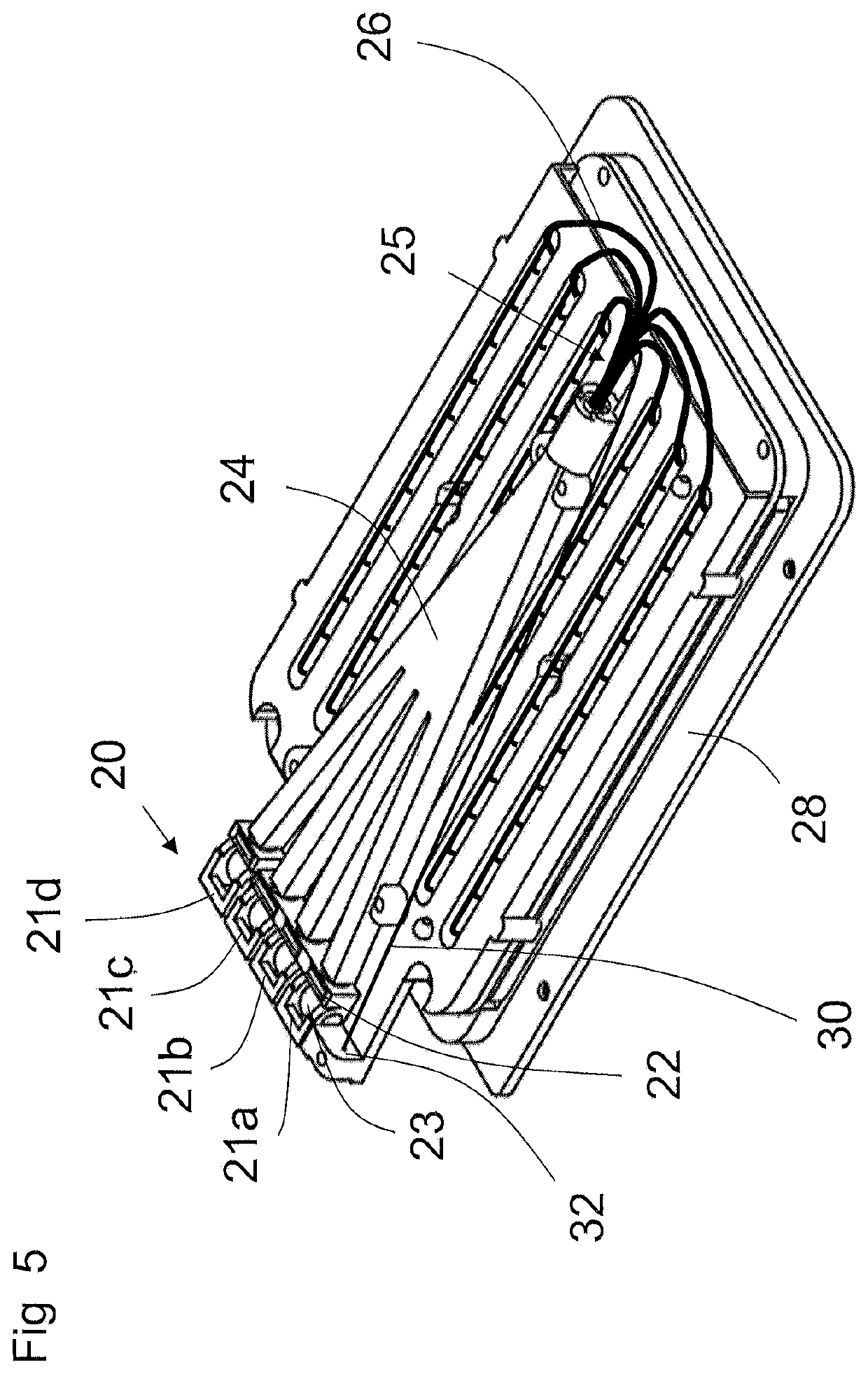Transmission apparatus for examining samples in cavities of a microtiter plate and method for examining samples in cavities of a microtiter plate by means of transmission
- Summary
- Abstract
- Description
- Claims
- Application Information
AI Technical Summary
Benefits of technology
Problems solved by technology
Method used
Image
Examples
Embodiment Construction
[0055]FIG. 1 schematically shows an exemplary embodiment of a transmission device 1. The transmission device 1 comprises an illumination device 2 and a detection device 4, between which there is an intermediate space 6 formed as a rectangular opening. The intermediate space 6 can be configured such that a microtiter plate 8 of the like shown in FIG. 2 can be inserted so as to fit exactly therein. The dimensions of the intermediate space 6 therefore substantially correspond to the dimensions of the microtiter plate 8, as a result of which the transmission device 1 has a compact design. Furthermore, the transmission device 1 comprises a plurality of status lights 3. Said status lights 3 are in each case assigned to one light-emitting diode arranged in the illumination device 2. The light-emitting diodes are hidden in FIG. 1. When one of the light-emitting diodes emits light, the assigned status light 3 also lights up. For reasons of clarity, only one of the status lights 3 has been pr...
PUM
 Login to View More
Login to View More Abstract
Description
Claims
Application Information
 Login to View More
Login to View More - R&D
- Intellectual Property
- Life Sciences
- Materials
- Tech Scout
- Unparalleled Data Quality
- Higher Quality Content
- 60% Fewer Hallucinations
Browse by: Latest US Patents, China's latest patents, Technical Efficacy Thesaurus, Application Domain, Technology Topic, Popular Technical Reports.
© 2025 PatSnap. All rights reserved.Legal|Privacy policy|Modern Slavery Act Transparency Statement|Sitemap|About US| Contact US: help@patsnap.com



